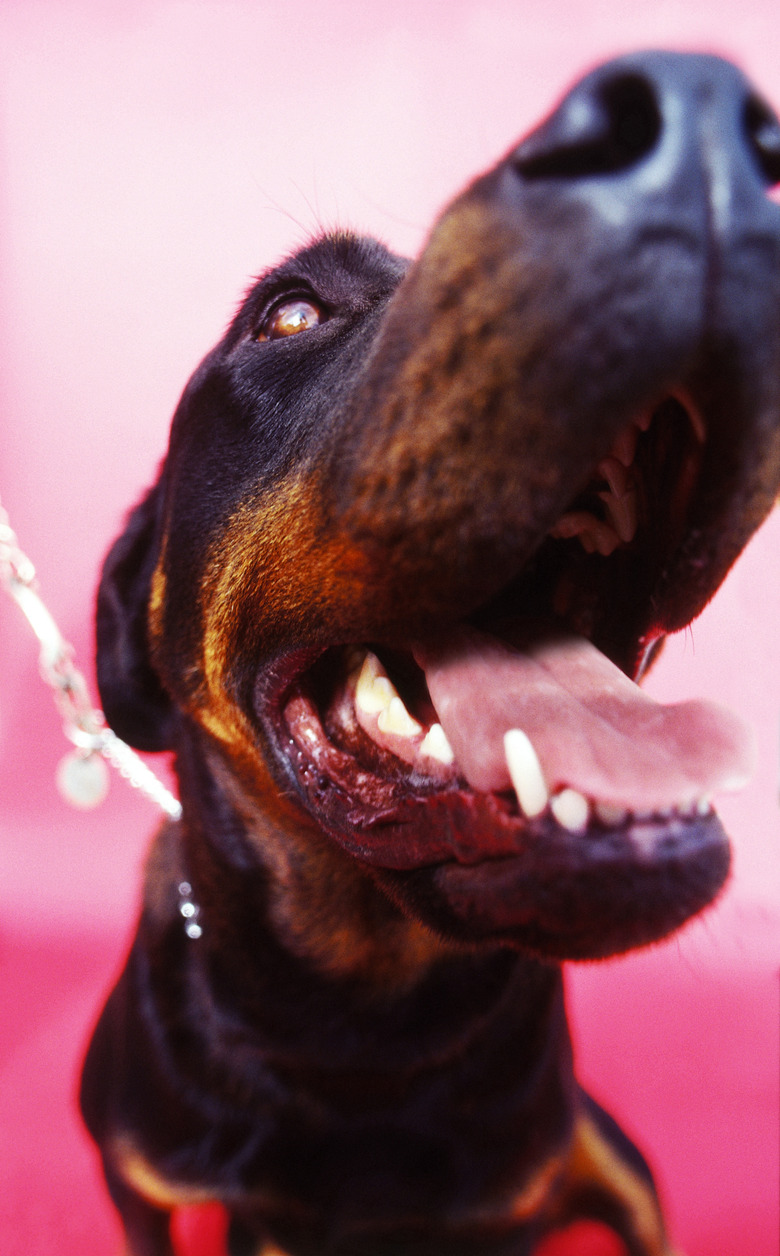How To Get Rid Of Black Tartar On Dogs
Dog breeds with bad teeth don't get that way without a little benign neglect because who really looks forward to prying their pup's mouth open and scrubbing those rather sharp canines? However, leaving your pet's mouth alone for too long can mean black teeth on dogs, and too little cleaning can even cause his chompers to loosen and fall out. By starting early and with some practice, you can brush your dog's teeth with little difficulty. The result is a pet who enjoys his shiny teeth well into his golden years.
Black teeth on dogs
Black teeth on dogs
You might not notice that your dog has a dental problem unless you peer inside her mouth, so start there and have a good look. Since your dog can't exactly tell you she's in pain, check to see whether her breath is bad, if her gums are irritated and red, and if there's yellowish or dark buildup on her teeth. Stinky breath is actually a precursor to worsening dental issues, as smelling it means your pet is starting to accumulate brown or black tartar on her teeth. Left alone, this sticky gunk can harden along the gum line, causing pain, bacterial infection, and tooth loss.
Avoid bad breath with early care
Avoid bad breath with early care
The best way to avoid bad teeth is to start dental care early, as soon as you adopt your dog or when he's just a puppy. By getting your dog used to the feeling of someone poking and probing inside his mouth, you'll have a better chance of cleaning his teeth well. As for when to begin, a dog's adult teeth emerge around 6 months of age, and it's these teeth you want to brush well and preserve for your dog's entire life.
It's a good idea to get on a schedule with your dog's tooth brushing routine. The ultimate goal is a daily cleaning, but if you can do a mouth dive three or four times a week, this is a worthy goal (even vets agree this is probably enough for most dogs). Still, with a practiced hand, you might not remove all the plaque or brown buildup on your dog's pearly whites. This is why pet professionals recommend that you have your dog's teeth cleaned by an expert once a year.
How to brush dog teeth
How to brush dog teeth
Are you ready to try brushing your dog's teeth? Some tips to know include:
- Pick a doggie brush. Nope, you really can't use a human toothbrush from the drug store. Instead, you'll need to get a canine tool. This type is softer and smaller, so it's better designed for your pup's mouth.
- Try your finger. If you can't find a brush or want to use a different method, there are finger covers you can wear over one digit for brushing black teeth on dogs.
- Use canine paste. Skip name-brand toothpaste since it often contains harmful ingredients, like fluoride and xylitol. For this clean-up job, you'll need doggie toothpaste, ideally in a flavor your pet loves, such as chicken liver or salmon.
- Angle it properly. Sawing away in a straight line isn't the best way to clean your pup's mouth. Position the brush at a 45-degree angle for good results.
- Go slowly. Rushing this task may irritate your dog. It's best to approach him slowly, work on one section of his mouth at a time, and move the brush in small circles near the gum line.
Try healthy dog chews
Try healthy dog chews
Along with a smart brushing plan, you can offer your pet dog chews that will help keep her mouth clean. Safe toys and chews on which your dog can gnaw can actually strengthen the teeth and gums. Ask your vet for advice if you're uncertain as to which ones might be best for your dog's breed.
